Science Curriculum Map Cycle A
Science Curriculum Map Cycle B
Science Narrative
Science Curriculum Overview
In response to our mixed-aged classes, our science Curriculum is implemented on a two-yearly programme (Cycle A and Cycle B). This ensures complete curriculum coverage for our pupils. As children progress throughout the school, they develop their knowledge, scientific skills and understanding through a range of topics and practical investigations. By Year 6, all children will have followed our progressive curriculum narrative pathway.
Intent
Our children:
- gain knowledge in science formed through interesting and exciting experiences that enhance awareness of their own abilities and strengths as a learner. They use their prior knowledge and apply taught skills to solve problems and develop the sophistication of science.
- see learning in science as an ongoing process not a one-off event, making links with how their learning fits with the world around them, including careers.
- will meet the National Curriculum expectations in science, taught by highly qualified staff who support children to develop mastery of concepts and inspire enthusiasm and interest in the subject.
- have opportunities to experience learning beyond the classroom. This will allow them to enrich their knowledge by visiting science museums and education laboratories and exploring the natural world all around them.
Implementation
The key threshold concepts across the Science curriculum are taught sequentially over time to develop scientific knowledge and skills from EYFS to Y6 and beyond. The curriculum is built around a process of interweaving topics, self-testing, and re-testing to aid the development of long-term memory and mastery of both skills and knowledge required. Children are taught with reference to the 3 scientific disciplines of Biology, Chemistry and Physics:
- Biology: Children learn that animals, humans and plants are made up of complex interacting systems to function. They recognise that organisms require a supply of energy to carry out basic functions of life and growth.
- Chemistry: Children learn that the Earth is a complex of interacting rock, water, air and life. They explore that particle theory of matter is the abstract idea that helps us develop an understanding of why materials behave as they do.
- Physics: Children learn that energy is a powerful and unifying abstract idea which is difficult to define. Forces change the state of rest or motion of the body.
Impact
Clear outcomes focus and guide Science development plans and drive improvement. Our children:
- demonstrate outstanding progress that reveals a clear learning journey. Children talk enthusiastically about their learning in science.
- are inspired to follow a pathway towards further study in science and aspire to a scientific career.
Science is key to providing the foundation for understanding of the changing world. Pupils can develop a sense of excitement and curiosity about natural phenomena. In the EYFS, science is included within “Understanding of the World”, where pupils learn about science by undertaking activities that help children to develop working scientifically skills and critical thinking. It is introduced, often indirectly, through activities that encourage every child to explore, problem solve, observe, predict, think, make decisions and talk about the world around them. At KS1 and KS2, the curriculum is underpinned by 6 threshold concepts which are regularly revisited and developed over time. The units are taught in a carefully sequenced manner; ensuring that pupils build knowledge, understanding and enquiry skills, which offer them the firm foundation as they make the transition to secondary school to continue their studies further. The topics studied are hierarchical, increasing in challenge as pupils progress from Y1-6.
The Journey Begins …
In every topic studied throughout a pupil’s time in Primary school, there are aspects of Mathematics and English that underpin the science curriculum; we believe this is key to pupils’ success in science. The quality and variety of language pupils hear and speak are key factors in developing their scientific vocabulary and presenting scientific justifications, evaluations, conclusions or arguments. Pupils are assisted in making their thinking clear, both to themselves and others, ensuring secure foundations are built by using discussion to probe and remedy misconceptions.
Biology
- Animals, humans and plants are made up of complex interacting systems to function.
- Organisms require a supply of energy for organisms to carry out the basic functions of life and to grow.
The two threshold concepts in Biology are taught across the following 3 topics: Plants, Animals & Humans and Living things & their habitats. The concepts stem from the idea that all living organisms are made from cells. Most organisms are multicellular – the organism needs to contain sophisticated systems to carry out the various life processes, which require energy. Pupils start by identifying a variety of common animals, describing and comparing their structure. This then leads to pupils grouping common animals into carnivores, herbivores and omnivores as well as identifying the major parts of the human body. Over time, pupils will explore in more depth the major body systems in humans, linked also to the concept of organisms requiring energy. We take the opportunity to study the human digestive, circulatory, respiratory and skeletal systems as well as the importance of nutrition, a balanced diet and the impact of lifestyle choices to build on this concept in humans. It is also explored using food chains, habitats, competition as well as in plants, whereby plant structure, transport of materials, substances required for growth and the life cycle of a flowering plant are studied. We take the opportunity to study flowers, trees and plant growth in the spring and summer months, when use of the outdoor area in school can be maximised to support learning. Organisms also require energy to reproduce; this is explored in plants and animals whereby lifecycles, sexual and asexual reproduction are studied. We teach evolution and inheritance towards the end of Year 6. This is due to the topic being more conceptually difficult and students can use the knowledge they have gained in the other aspects of Biology to help build on the idea that plants and animals are classified which links to evolution. A good grounding in reproduction also aids pupil understanding of inheritance.
Chemistry
- The Earth is a complex of interacting rock, water, air and life.
- The particle theory of matter is the abstract idea that helps us develop an understanding of why materials behave as they do.
The two threshold concepts in Chemistry are taught across the Materials topic. The concepts stem from the idea that all materials are made from atoms/particles and everyday materials behave in different ways, which can relate to simple physical properties and the arrangement of particles. The concept is more complex and increasingly abstract over the course of the curriculum, which prepares students for Chemistry at secondary school. Other aspects of chemistry that are developed using the concept that earth’s resources can occur because of natural phenomena. Pupils start by distinguishing between an object and the materials from which it is made, identifying everyday materials, describing their physical properties, being able to group materials based on their properties and comparing the suitability of everyday materials for uses. The opportunity is then taken to look at the physical properties of rocks and fossils as well as soil formation which links with the concept that earth is a complex of interacting rock, water, air and life. As the topic progresses, pupils look at the particle model of solids, liquids and gases and what happens to materials when heated or cooled and how evaporation and condensation are related to the water cycle. In Year 5 pupils begin to explore the nature of physical and chemical reactions as well as separating simple mixtures.
Physics
- Energy is a powerful and unifying abstract idea which is difficult to define.
- Forces change the state of rest or motion of a body. They hold matter together and interplay between all objects.
The two concepts in Physics are taught across a range of topics including Light, Sound, Electricity, Earth & Space and Forces & Magnets. Energy is a fundamental concept of physics that enables the explanation and prediction of many phenomena and contributes to the unification of the various branches of physics. Energy is a difficult concept to understand and master, which is why physics is usually taught from Year 3 onwards. The curriculum explores different forms of energy stores including electricity, sound and hearing and light and seeing. Pupils explore light, reflections and shadows before then being able to explain how we see things using ideas about light and its properties. Pupils in Year 4 learn how sounds are made, features of sound waves including pitch, amplitude, and dissipation. Electricity includes common electrical appliances, constructing simple series circuits, common conductors and insulators, recognising components from circuit diagrams and investigating components in series circuits.
Force is a useful idea because it is the key to explaining changes in the motion of an object or in its shape. Understanding forces help us to predict and control the physical world around us. The idea of forces stem from the idea that essentially a force is a push or pull acting upon an object because of its interaction with another object. Pupils study contact and non-contact forces including magnetism and magnetic materials. Contact forces are explored through air and water resistance. Levers, gears and pulleys also look how forces can be useful in everyday contexts.
Earth and Space adopts both concepts, since it involves the force of gravity, which influences many dynamic processes within the earth’s interior, on and above its surface. Energy is transferred from the sun to Earth via electromagnetic waves, or radiation. Most of the energy that passes through the upper atmosphere and reaches Earth’s surface. The topics studied include the movement of the earth and other planets relative to the sun and its solar system, movement of the moon and explaining day and night.

